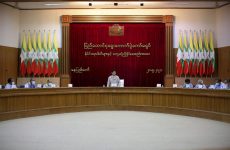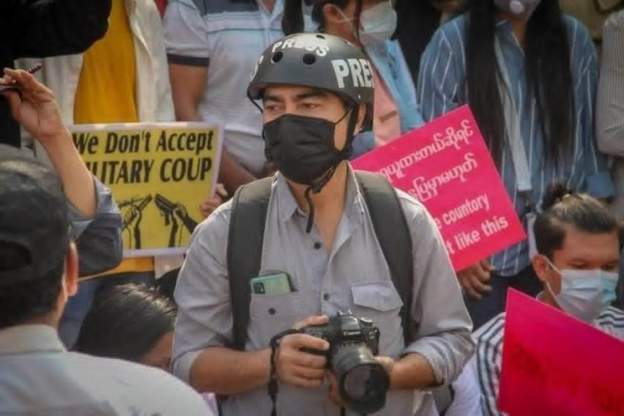Dec 4,2012
By Francis Wade
A few weeks ago I warned that a witch-hunt may begin in western Burma after a group of influential monks in the town of Sittwe instructed Arakanese to seek out and harass local Muslims. Following a meeting in October at a local monastery, the monks had circulated a document calling on Arakanese to “expose sympathisers of Bengali Kalars [Kalar is a derogatory term for people of South Asian descent] as national traitors along with photos and spread the information to every township”.
It came in the wake of months of fighting between Muslim and Buddhist communities in Arakan state that has resulted in discoveries of mass graves and apartheid-like segregationist measures.
Now two photos have emerged that apparently show this witch-hunt to be well under way. Two Arakanese men are pictured being paraded around with placards around their neck. One man, allegedly from the town of Myebon near Sittwe, wears one sign that reads “’I am a traitor and slave of Kalar”.

Photo taken from Facebook shows man wearing placard that reads ‘I am a traitor and slave of Kalar’ being praraded around Myebon in Arakan state (Facebook).
A caption beneath the photo that was circulated on Facebook says, “A man who buys/sells groceries to Kalars in Myebon on public display (a lesson for all Arakanese people to take)”. The photo is dated from August this year.
A second, undated photo shows a different man with a placard that says, “I am a traitor”. Furthermore, it appears he has been forced to wear a woman’s longyi on his head. Burmese males consider the wearing of female garments to be culturally insulting, and a potential threat to the standing of males in society (more on that here).
The authenticity of the photos cannot be independently confirmed, although both are consistent with a now documented drive in Arakan state (and other parts of Burma) to weed out those who are seen to be helping the Rohingya, a Muslim minority who have borne the brunt of the ethno-religious violence between Buddhists and Muslims that began in June.
There’s something chillingly medieval about the whole affair – both what it means for Arakanese who continue to interact with Muslims (who until June co-existed comparatively harmoniously), and of course for the Muslim community itself, which now exists mainly in camps and urban ghettos. Judging by the expression on the men’s faces, public humiliation has become an effective weapon in this conflict.
And as has been mentioned time and again, the role that monks have played in whipping up this anti-Muslim fervour never ceases to shock.
Source: http://asiancorrespondent.com/








